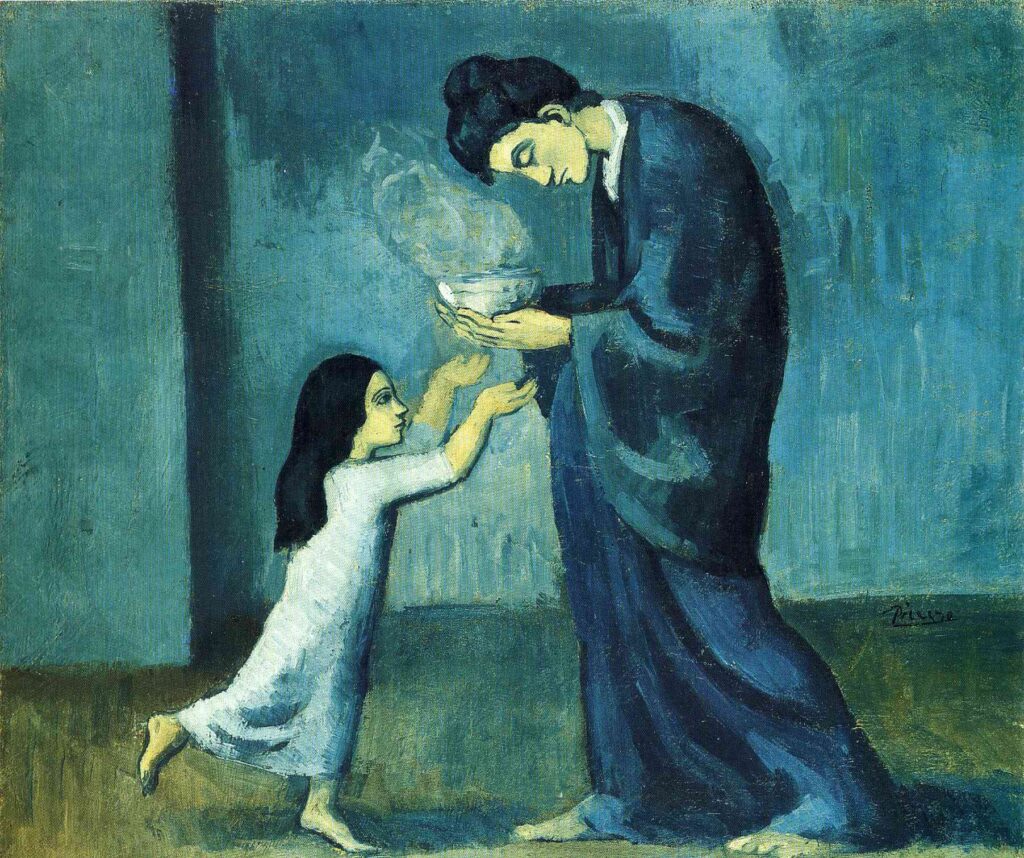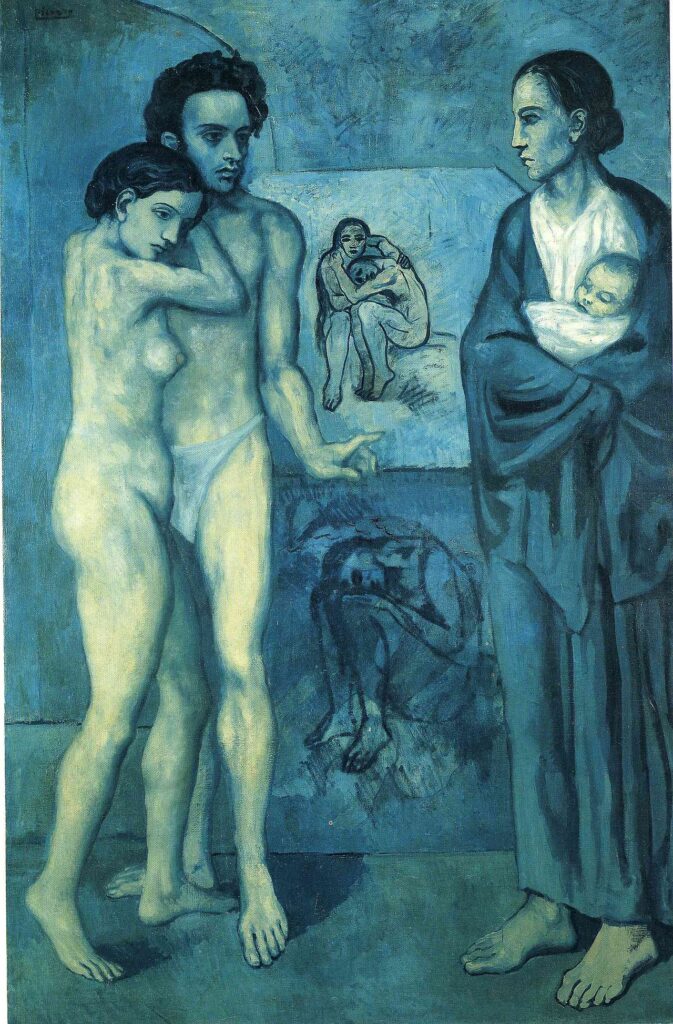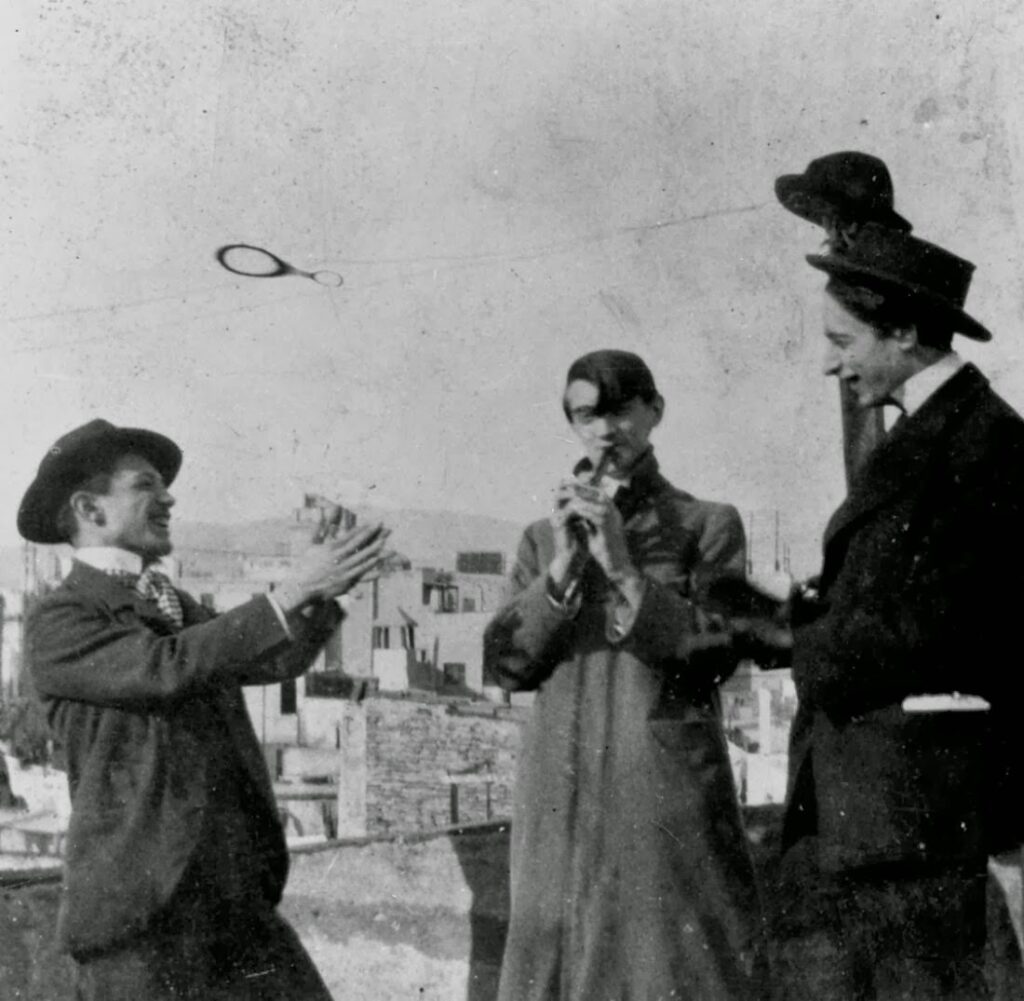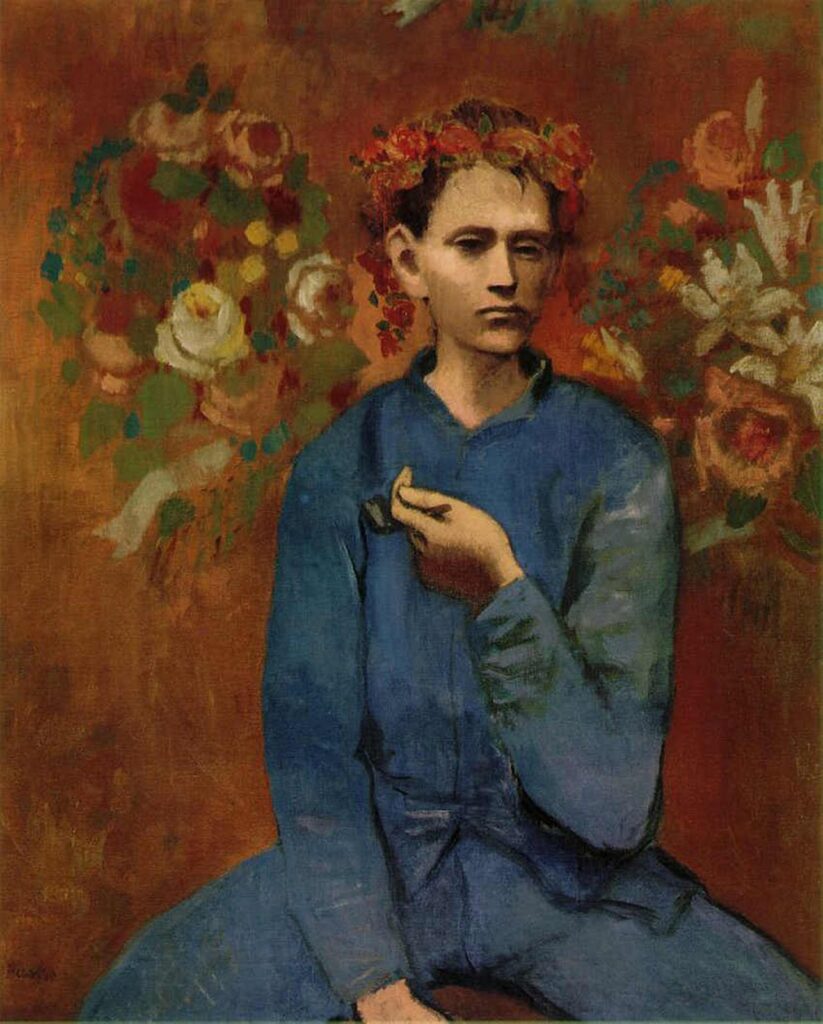It’s hard to believe that a painter as well-known as Pablo Picasso could have ever experienced poverty and destitution, or that it would go on to affect his work so profoundly.
Picasso’s Blue Period occurred between 1901 and 1904. It was a period where the painter would capture lonely and melancholy scenes all in shades of blue.
Spurred on by the loss of a dear friend, this Blue Period differed greatly from the bright, colorful, geometric paintings that would gain Picasso worldwide, long-lasting fame. These sometimes haunting paintings reflected Picasso’s grief.
But also, they were a reflection of the hard life that he was living at the time, and the others who shared the same trials and tribulations as he did. Let’s look a little deeper into this Blue Period, and see why the paintings are so impactful even now.

The Paintings of Picasso’s Blue Period (1901-1904)
Pablo Picasso was a prolific painter throughout his career. Despite the grief he was working through at the time, his Blue Period was no different.
All of these works were done in varying shades of blues that often trended towards gray with occasional splashes of other colors, usually browns and reds. While Picasso may have painted a large amount of Blue Period paintings, there are a few that are more important than others.
- La Vie (1903)- Not only the most important painting of Picasso’s Blue Period but also one of the most important pieces of his entire career, La Vie encapsulates everything Picasso was trying to convey during this era of his life. It depicts a nude couple standing next to a mother holding her child. The man in the picture bears the face of Picasso’s recently deceased friend Carlos Casagemas. According to the Cleveland Museum of Art, where the painting permanently resides, the odd subject represents “an allegory of sacred and profane love”.
- The Old Guitarist (1903)- Another one of the most important paintings to come from the Blue Period is The Old Guitarist. This dreary painting features a skinny old man hunched over his guitar with his legs crossed and his head bowed. The guitar is brown, the only bit of color in the piece besides blue, but even it appears somber. The Old Guitarist represents poverty and isolation.
- The Blue Room (1901)- One of the earliest pieces in the Blue Period, The Blue Room features reds and oranges. But the predominant color is still the same oppressive blue as the other Blue Period paintings. It depicts a woman, naked and washing herself in the center of an apartment. This space is said to be similar to Picasso’s own living situation at the time and conveys the loneliness of the subject in her small, crowded room.

What Does Picasso’s Blue Period Represent?
Picasso’s Blue Period would represent many things that were happening in the painter’s life, including despair, poverty, grief, loneliness, and feeling like an outcast of society.
Over the years that spanned his Blue Period, Pablo Picasso’s monochromatic paintings would come to display many different subjects and emotions. But this period of his career has one very clear, tragic starting point.
Picasso himself said, “I started painting in blue when I learned of Casagemas’s death,”. Carles Casagemas was a Spanish painter and poet who was a close friend of Picasso’s, and he would tragically take his own life on February 19, 1901, at the L’Hippodrome Cafe in Paris, France.
Picasso was not in Paris when Casagemas died by his own hand. But when he returned, he moved into the studio that had previously been occupied by Casagemas, rushing to finish his work for an upcoming exhibition.
It was still 1901 when Picasso began to process his grief through his work. He created one of his last paintings before entering his Blue Period, fittingly titled The Death of Casagemas.
These events–the death of his friend, moving into said friend’s studio, and finishing the paintings for his exhibition in this studio would be the catalyst for the beginning of Picasso’s Blue Period. In the beginning, this period was all about one powerful, overarching emotion–grief.

Later Picasso would go on to capture other thoughts, subjects, and emotions in his blue paintings. The melancholy nature of these drab paintings would mirror his deteriorating mental state, and show Picasso’s struggle with loneliness and his career, picturing the outcasts of society, which Picasso often felt himself a part of.
Before his Blue Period, Picasso was seeing relative success and popularity in the art world. But his posthumous paintings of Casagemas followed by the somber, monochromatic blue paintings didn’t endear him to the public like his previous colorful works.
His career suffered. Picasso was in a severe depression, and his earnings from his paintings were running dry.
With little to no income coming in from his work, Picasso would often paint over fully finished pieces to save money on expensive canvases. With new technology, we can see beneath the layers and get an idea of what had previously been depicted in some of these paintings, including hidden self-portraits.
Luckily, these feelings of grief, loneliness, and melancholy wouldn’t last. After his Blue Period, Picasso would enter his Rose Period, where his paintings would convey the return of the artist’s optimism and renewed success.

What is the Difference Between Picasso’s Blue Period and Rose Period?
The difference between Picasso’s Blue Period and Rose Period is that his Blue Period was characterized by paintings done in shades of blue to represent his depression and ailing mental state. On the other hand, his Rose Period displayed Picasso’s return to happiness and his heavy use of the color pink.
As the fog of depression and despair lifted, Picasso’s paintings started to take a turn. He left behind the somber blues and imbued more colors into his pieces, trending towards pinks and roses to express his newfound joy and lightheartedness.
Together, the Blue Period and the Rose Period would come to be known as some of the most influential periods of Picasso’s life as a painter.
References
“La Vie”
https://www.clevelandart.org/art/1945.24
“The Death of Casagemas”